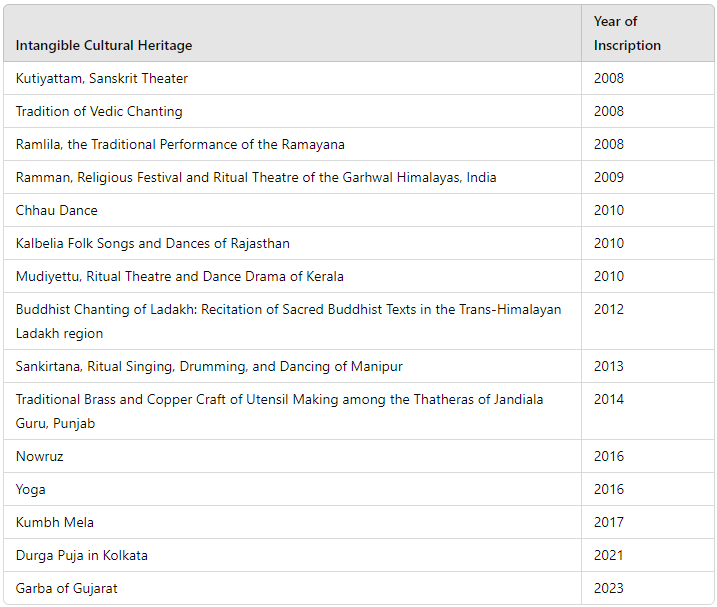Subject: Art & Culture
(
Relevance: The Kumbh Mela is an important topic for UPSC CSE as it is recognized as an ‘Intangible Cultural Heritage’ of India. The event carries cultural, religious, and socio-economic significance, showcasing India's diversity and rich heritage.)
Why in the news?
The Maha Kumbh Mela, one of the largest religious gatherings globally, occurs every 12 years at four major locations in India—Haridwar, Allahabad (Prayagraj), Nashik, and Ujjain. It attracts millions of pilgrims, devotees, and tourists worldwide. The Maha Kumbh Mela 2025 will commence on
January 13, 2025, with the
Paush Purnima Snan, and will conclude on
February 26, 2025, coinciding with
Maha Shivratri.
Key Takeaways
Sacred Gathering:
The Maha Kumbh Mela is deeply rooted in Hindu mythology, offering devotees an opportunity to cleanse sins and attain Moksha (liberation).
Spiritual Alignment:
The festival is considered auspicious due to planetary alignments believed to enhance spiritual energy, making it an ideal time for spiritual practices.
Historical Foundations:
The origins of Kumbh Mela are traced back to ancient Hindu texts like the Mahabharata and Puranas. The mythology of Amrit Manthan (churning of the ocean) mentions that four drops of nectar (amrita) fell at the current Kumbh Mela locations, giving the festival its spiritual essence.
Cultural Significance:
The confluence of the Ganga, Yamuna, and the mythical Saraswati at Prayagraj (Sangam) holds immense religious importance. Bathing at Sangam during Kumbh is believed to cleanse sins and bring spiritual freedom.
Unity in Diversity:
The Maha Kumbh Mela fosters unity, bringing together people from varied backgrounds, castes, and creeds in their shared pursuit of spirituality and inner peace.
Key Rituals
Shahi Snan (Royal Bath):
Naga sadhus and other ascetics lead ceremonial baths, symbolizing spiritual purification.
Devotional Practices:
Singing bhajans, chanting, and kirtans create an ambiance of spiritual fervor.
Yoga and Meditation:
Many attendees practice yoga and meditation for physical and mental rejuvenation.
Spiritual Discourses:
Saints and gurus deliver sermons on spiritual and philosophical topics, enriching the spiritual knowledge of attendees.
Difference Between Maha Kumbh and Kumbh Mela
Frequency:
Maha Kumbh Mela: Occurs once every 12 years, primarily at Prayagraj, and is considered the most sacred.Kumbh Mela: Held every three years, rotating among Haridwar, Ujjain, Nashik, and Prayagraj.
Scale:
Maha Kumbh Mela is a grander event attracting up to 40 crore (400 million) participants, compared to the smaller scale of regular Kumbh Melas.
Spiritual Importance:
While both events are significant for spiritual growth, the Maha Kumbh is seen as more potent for achieving Moksha.
Locations:
Maha Kumbh is predominantly associated with Prayagraj.
Kumbh rotates across Haridwar (Ganga), Ujjain (Shipra), Nashik (Godavari), and Prayagraj (Sangam).
Global Recognition
In 2017, Kumbh Mela was recognized as India’s ‘Intangible Cultural Heritage’ by UNESCO and inscribed on the Representative List of the Intangible Cultural Heritage of Humanity. It is described as the “festival of the sacred Pitcher,” where devotees cleanse themselves in sacred rivers.
As defined by the 2003 UNESCO Convention for Safeguarding Intangible Cultural Heritage, such practices represent the cultural expressions, traditions, and knowledge shared across generations.


